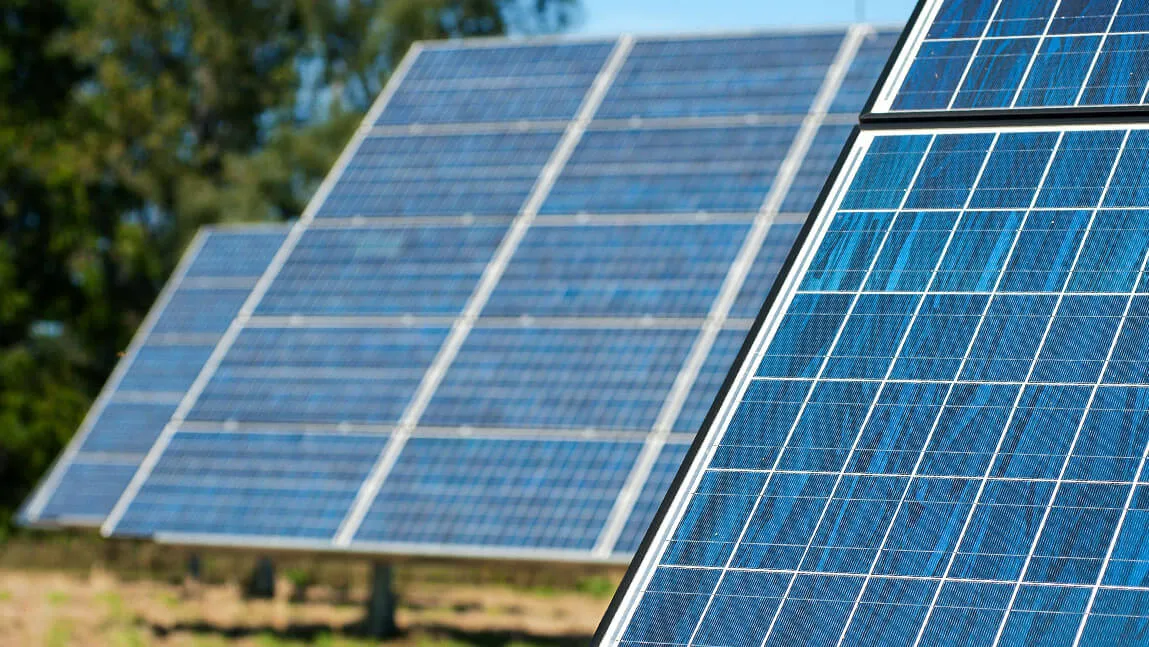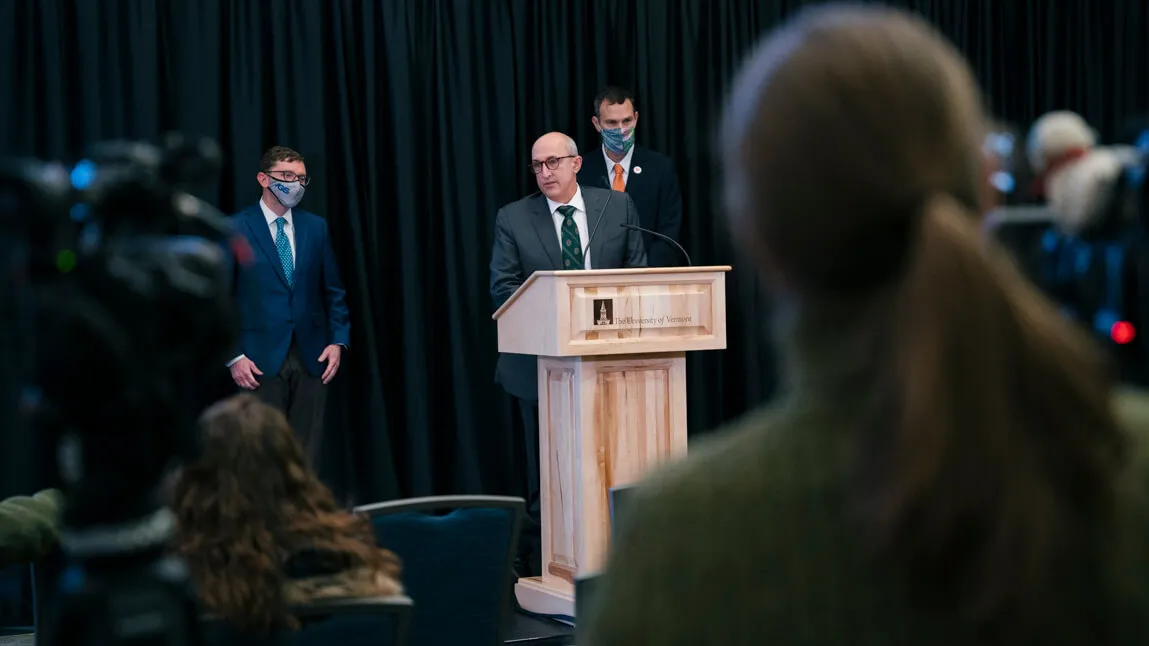In an effort to create a cleaner and more energy efficient Vermont, the University of Vermont (UVM)―in conjunction with over a dozen manufacturing and electric utility companies, state and local government offices, Vermont higher education institutions, and non-governmental organizations—has formally announced the Vermont Clean and Resilient Energy Consortium (VCREC). The VCREC seeks funding for research and related economic and commercial development related to clean energy, and to collaborate on projects of mutual interest to support clean energy delivery, renewable energy, decarbonization, and energy resiliency.
UVM’s Vice President for Research Kirk Dombrowski convened the energy groups—which include Burlington Electric, Renewable Energy Vermont, Green Mountain Power, VELCO, the Vermont Center for Emerging Technologies, GlobalFoundries (GF), the Vermont State Colleges System, and others—with the understanding that Vermont should be more nationally recognized as a proving ground for clean and renewable energy. With a unique power infrastructure that is ready to face the issues of a warming state and a warming world, the VCREC aims to become a powerful translational partnership in advising and influencing real-world problems and challenges.
“Vermont is in a unique position to become a statewide testbed for innovative ideas in clean, green energy,” Dombrowski said. “The partnership of utility companies like Burlington Electric, manufacturing companies like GF, and researchers at UVM, Norwich University, and Vermont State Colleges makes the VCREC ready to advise and influence renewable energy standards throughout the state and into the national stage.”
The consortium’s first initiative—the Vermont Green Hydrogen Partnership–was unveiled in January. The partnership by UVM, Vermont Gas Systems, Inc. (VGS), and GF is championing a pilot project that will allow GF to reduce its carbon emissions even further by introducing the use of green hydrogen, which will be produced on-site at its Fab 9 campus in Essex Junction, Vermont. Devices known as electrolyzers, powered with electricity from renewable sources like wind and solar, will extract hydrogen from water without producing new carbon emissions. The company will blend the extracted hydrogen into Fab 9’s gas lines and thereby reduce carbon emissions through reduced consumption of natural gas.
GF will introduce green hydrogen into the natural gas lines used for heating Fab 9. For VGS, green hydrogen is an important strategic innovation to displace fossil gas and reduce greenhouse gas emissions in support of Vermont’s Global Warming Solutions Act (GWSA). Green hydrogen can be blended with natural gas and used directly in boilers, furnaces, and other appliances. For the pilot project, green hydrogen will be blended only into GF’s on-site systems in Essex Junction.
Another potential project for the consortium stems from UVM Professor Jeff Marshall’s work on the concept of energysheds, a key focus of VCRECs near-term work.
“An energyshed is similar to a watershed or a food shed and can be used to geographically track the origin of a renewable energy source such as solar photovoltaics. The Department of Energy is examining energysheds as a way of managing highly distributed renewable energy sources,” Marshall said. “Both watershed systems and energyshed systems with large amounts of renewable distributed energy generation must deal with the problem of a highly intermittent source dependent on weather conditions. This situation is very different from how current power systems operate. By exploring similarities with watershed systems, we hope to develop and test new approaches to managing a power grid with large amounts of distributed generation.”
Marshall is a professor of fluid mechanics and associate dean for research at UVM's College of Engineering and Mathematical Sciences. He has researched nanoparticle diffusion, biofilm simulation, and renewable energy systems.
Testing new approaches in clean and renewable energy is paramount in combatting a warming state and a climatically dramatic world. A comprehensive climate assessment, which UVM released in November 2021, showed that Vermont’s “average annual temperature has warmed by nearly 2°F, and precipitation has increased by a whopping 21%, since 1900.”
“The new tools the VCREC develops and promotes will establish Vermont as the model in combatting climate change and creating a cleaner, greener world,” Dombrowski said.
VCREC Members:
Burlington Electric
Encore
GlobalFoundries
Green Mountain Power
Hyde Parke Electric
Northern Reliability
Packetized Energy
Renewable Energy Vermont
Stowe Electric
Norwich University
University of Vermont
VCET
VEIC (Vermont Energy Investment Corporation)
VELCO (Vermont Electric Power Company)
Vermont Agency of Commerce and Community Development
Vermont Agency of Natural Resources
Vermont Department of Public Service
Vermont Electric Co-Op
Vermont Gas
Vermont Public Power Supply Authority
Vermont Technical College

